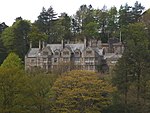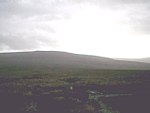Wyresdale Abbey
Buildings and structures in the City of LancasterLancashire building and structure stubsMonasteries in LancashireUnited Kingdom Christian monastery stubs
Wyresdale Abbey was a short-lived medieval monastic house in Over Wyresdale, Lancashire, England. It was founded around 1170 or a little later and ceased to exist by 1204.Cistercian monks from St Mary of Furness built the monastery near the end of the reign of Henry II. Its charter was granted between 1194 and 1198. The chaplain of St. Michael-on-the-Wyre was appointed chaplain of the monks for life.The only remaining traces of the abbey are some carved stones reused in other buildings. The village of Abbeystead takes its name from Wyresdale Abbey and is situated just north of its former site.
Excerpt from the Wikipedia article Wyresdale Abbey (License: CC BY-SA 3.0, Authors).Wyresdale Abbey
Abbeystead Lane, Lancaster Over Wyresdale
Geographical coordinates (GPS) Address Nearby Places Show on map
Geographical coordinates (GPS)
| Latitude | Longitude |
|---|---|
| N 53.981418 ° | E -2.67354 ° |
Address
Abbeystead Lane
Abbeystead Lane
LA2 9BQ Lancaster, Over Wyresdale
England, United Kingdom
Open on Google Maps










